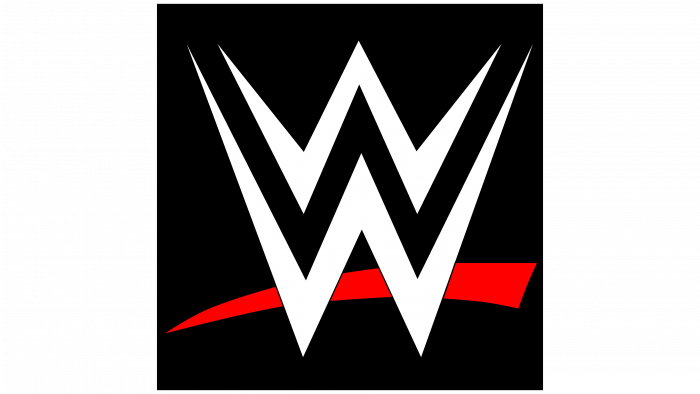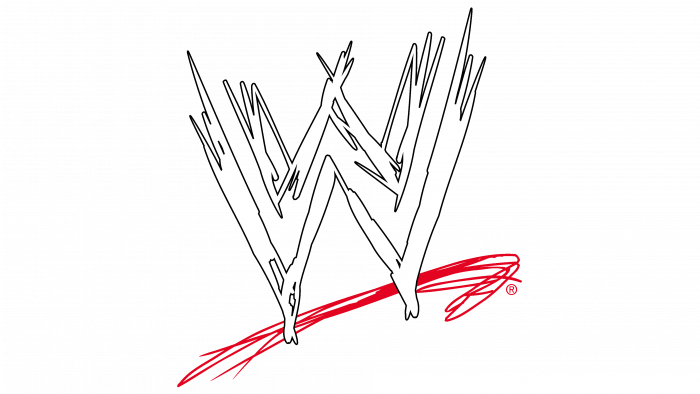 World Wrestling Entertainment (WWE) Logo PNG
World Wrestling Entertainment (WWE) Logo PNG
The WWE logo is a nod to poignant plots that keep you on your toes and boost the channel’s ratings. According to the emblem, the choice of programs is based on the spectacle and the brightness of the emotions that they evoke.
WWE: Brand overview
| Founded: | 1953 |
| Founder: | Jess McMahon or Vincent J. McMahon |
| Headquarters: | Stamford, Connecticut, United States |
| Website: | wwe.com |
Meaning and History
Capitol Wrestling Corporation was founded in 1953 by Toots Mondt, Jess McMahon, or Vincent J. McMahon. It is the largest wrestling show organization conducting live wrestling tournaments – more than 500 programs a year.
A little later, the Titan Sports, Inc. association was formed, registered in 1980. It opened in South Yarmouth, Massachusetts. Its founders are Linda McMahon and Vince McMahon. Two years later (in 1982), this firm bought the holding company Capitol Wrestling Corporation Ltd. Later, the CWC joined the NWA (National Wrestling Alliance).
In 1998, Titan took on a new name, becoming the World Wrestling Federation. It was renamed World Wrestling Federation Entertainment in 1999 and World Wrestling Entertainment in 2002. But, since 2011, the shortened version is most often used – WWE. Now, this abbreviation is much better known than the company’s full name, although it has not changed legally.
Considering such a long career of two organizations at once, it can be understood that they have had many emblems in the entire history of their existence. In general, there are more than ten modifications.
1952 – 1963
The earliest logo is based on an abbreviated version of the Capitol Wrestling Corporation name. It contains the abbreviation CWC, played out in the form of steep horns. This style was very suitable for the company since the two side letters “C” themselves begged for such an interpretation. To enhance the “tough” effect, the developers flipped the right “C,” making it a mirror image of the left letter. The middle part is occupied by “W,” played like an evil squint on the “muzzle” of a bull, which is very consonant with the style of the wrestling team.
1963 – 1971
A new emblem was automatically created after changing the name to the World Wide Wrestling Federation (WWWF). It is completely theme-centered and is not as symbolic or elegant as the old one. It depicts two wrestlers: one standing and holding a second wrestler over his head, ready to throw him into the ring to win. On the right side of the figures are two versions of the company name (full and abbreviated), a large inscription “CHAMPIONSHIP,” as well as the phrase “Villie Gilzenberg, the president,” located in two lines. The only thing that has survived from the old logo is black and white.
1971 – 1979
In 1971, a radically different emblem was introduced – a graphic one. The name “World Wide Wrestling Federation” is located on it in the form of an arch at the top. It is made in small print and is located above the globe, lined with a grid of parallels and meridians. Not in the foreground is an abbreviation combined of three “W” s with serifs. The letters are white and outlined with a thin black stripe. Below them, the word “Federation” is written in a different font.
1979 – 1982
The designers removed the abbreviation that obscured the globe and detailed it. In addition to the geographic grid, they mapped all the continents, slightly expanding both hemispheres. Above was placed a large inscription “W. W. F.” as the TV company changed its name to World Wrestling Federation (see the logo below).
1982 – 1985
In 1982, the developers proposed a radically different version – a simple one. All unnecessary elements have disappeared from it – only the stylized abbreviation “WWF” remains. It is drawn on a white background with wide black lines connected into a single whole.
1985 – 1998
The logos of those years were laconic (there are two versions): one with a predominance of black, the other – white. But the shape is the same – a composite geometric figure in which the abbreviated name “WWF” is visible. It is made with a single continuous line of the same width. There is a white stripe in the center of the dark emblem. The light logo, on the other hand, contains a black line. It is also outlined with it. The letter “F” has a larger gap between the top and middle strokes, making it well recognizable.
1995 – 1998
For a while, two emblems were in use. Since 1995, color has been used in parallel with the black and white versions. It consists of a neon yellow center and cobalt outline along with the letters. The small background cube is painted in the same color. The abbreviation is turned sideways and is placed vertically with a slant to the left.
1997 – 2002
This logo debuted at the 1997 Survivor Series during the Attitude Era. Officially, it began to be used at the end of the year, adjacent to the previous version, which lasted until the spring of 1998. The updated version draws the letters with sharp, short strokes: they look like sloppy lines, made hastily by hand. One emblem has wide stripes; the other has thin stripes.
2002 – 2014
In May 2002, the company removed the word “Federation” from its name for good. She started using “Entertainment” instead (following a lawsuit by the World Wildlife Fund). In 2011, the wrestling organization finally approved the WWE symbol, formed from World Wrestling Entertainment. There is only one “W” on the logo, also outlined with uneven strokes. The only thing that has survived is the red line at the bottom, which diagonally emphasizes the letter.
2014 – today
The current emblem also exists in two versions – light and dark. Designer John Lefteratos created them. He made the symbolism more confident and solid, using smooth and unbreakable lines for this. Of these, two “W” are formed in lightning: one at the top and the second at the bottom. Between them, there is another similar letter in the negative space, which is visible in contrast to the black version. The chaotic bottom underline has become a wide band with a tapered end on the left.
WWE: Interesting Facts
WWE, also known as World Wrestling Entertainment, is a big deal worldwide because it combines sport with entertainment, making it unique. It has a huge following because of its exciting stories and athletic performances.
- How WWE Started: Back in 1953, two guys named Jess McMahon and Toots Mondt created WWE, first called Capitol Wrestling Corporation. Over the years, it changed its name a few times before settling on WWE, growing into a big name in entertainment beyond just wrestling.
- WrestleMania: This is the biggest event in wrestling, similar to the Super Bowl for football fans. It started in 1985 and has become a worldwide event with famous guests, big music acts, and unforgettable wrestling matches.
- The Undertaker’s Winning Streak: The Undertaker is a wrestling legend who won 21 times at WrestleMania from 1991 to 2013. This streak was a big deal until Brock Lesnar ended it at WrestleMania 30.
- WWE’s Global Audience: WWE shows are watched in over 180 countries and over 30 languages, showing worldwide popularity. The company reaches its audience through TV, pay-per-view, and its streaming service, WWE Network.
- Hall of Fame: WWE honors its stars and other big names in wrestling through its Hall of Fame, celebrating those who have significantly impacted the sport.
- Innovative Programming: WWE pioneered pay-per-view and launched the WWE Network in 2014, offering fans a huge library of matches, documentaries, and shows.
- Stars Beyond Wrestling: Some wrestlers like Dwayne “The Rock” Johnson, John Cena, and Dave Bautista have become famous in movies and TV beyond wrestling.
- Charity Work: WWE participates in various charity activities, working with organizations like Make-A-Wish and Susan G. Komen for the Cure and running its anti-bullying campaign.
- Women’s Wrestling: WWE has made big moves to promote women’s wrestling, leading to women headlining major events like WrestleMania, showing a commitment to gender equality in the sport.
- Engaging Fans: WWE is great at keeping fans involved, using their feedback, and keeping events like the Royal Rumble exciting with surprise entrants and outcomes.
WWE is a blend of sport and show that continues growing, adapting, and entertaining fans worldwide.
Font and Colors
The evolution of the logo occurs simultaneously with the change of company names; therefore, it is a constant correction of the abbreviation. If the sign was triple at the beginning, now it is single: CWC, WWF, and now W. In addition, accompanying details in the form of a globe and expanded inscriptions have gradually disappeared from the logo.
The WWE logo uses the Smack Laideth Down font from Checkered Ink. An early version used a typeface reminiscent of the Ikarus Regular with sharp serifs.
The corporate colors are classic, restrained – black, white, and red. The exception was the 1995-1998 logo when it featured bright shades of yellow and blue.
WWE color codes
| Red | Hex color: | #ff0000 |
|---|---|---|
| RGB: | 255 0 0 | |
| CMYK: | 0 100 100 0 | |
| Pantone: | PMS 1655 C |
| Black | Hex color: | #000000 |
|---|---|---|
| RGB: | 0 0 0 | |
| CMYK: | 0 0 0 100 | |
| Pantone: | PMS Process Black C |















